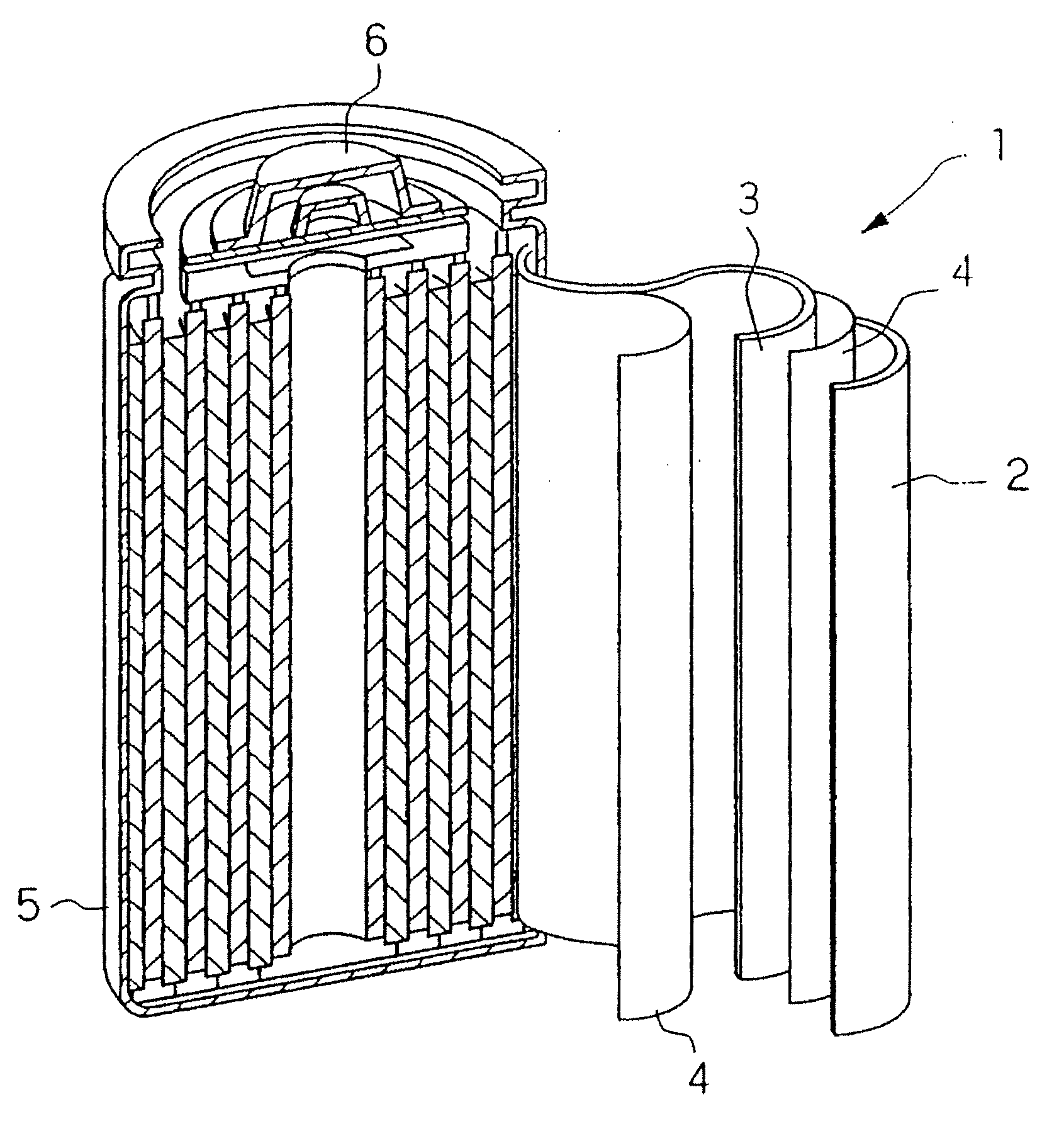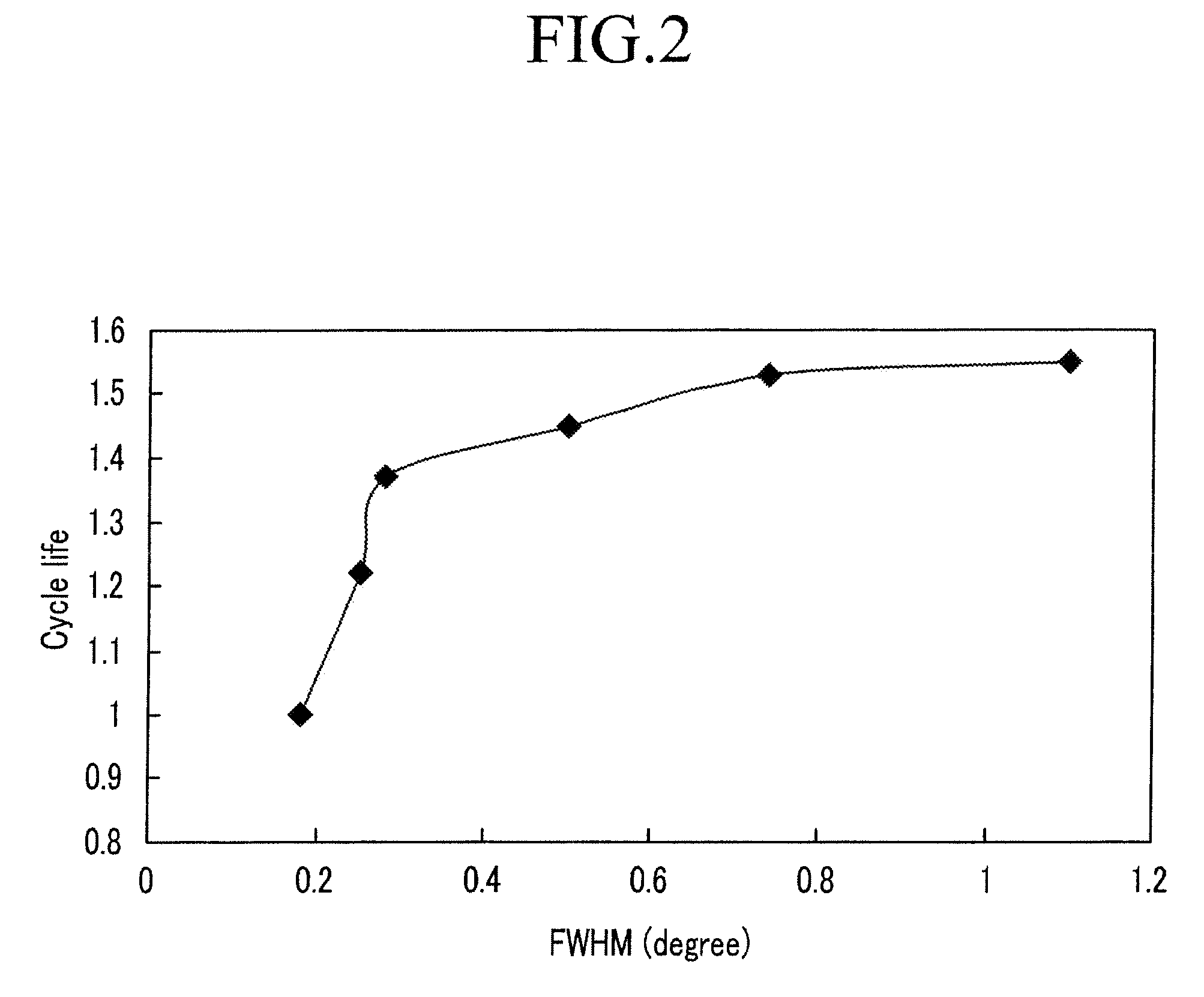Negative active material for lithium secondary battery, and lithium secondary battery including same
a secondary battery and active material technology, applied in the direction of active material electrodes, non-aqueous electrolyte accumulator electrodes, cell components, etc., can solve the problems of low capacity when used in batteries, decomposition of electrolyte, deterioration of battery cycle life, etc., to suppress the expansion of the crystal structure of lixmyvzo2+d, suppress the volume change, and reduce the capacity of charge and discharg
- Summary
- Abstract
- Description
- Claims
- Application Information
AI Technical Summary
Benefits of technology
Problems solved by technology
Method used
Image
Examples
example 1
[0059]V2O4 and Li2CO3, and MgCO3 were dry-mixed at a mole ratio of Li:V:Mg of 1.1:0.89:0.01 to provide a mixture. The mixture was fired under a nitrogen atmosphere in an electric furnace at 1100° C. to provide Li1.1Mg0.01V0.89O2. The material had an average particle diameter of 15 μm.
[0060]After mixing the material with a synthetic graphite having an average particle diameter of 20 μm in a weight ratio of 9:1, the resulting mixture was introduced into a stainless steel container of a planetary ball mill (P-5 type, manufactured by Fritsch) together with a 1.5 cm stainless steel ball. The container was closed and sealed under an argon atmosphere and treated at 10 G for 0.5 hour.
[0061]The material was measured with an X-ray diffraction device (RINT2000 manufactured by Rigaku Corporation) at measurement conditions of 50 kV, 300 mA, 1 degree / minute, and 5 to 90 degrees. The results are shown in FIG. 1.
[0062]The FWHM of the (003) plane peak (20:18 degrees adjacent) after the planetary bal...
example 2
[0069]A coin cell was fabricated as in Example 1, except that the gravitational acceleration of the planetary ball mill varied from 1 to 30 G, the treatment duration varied from 15 minutes to 20 hours, and the cell was measured to determine the relationship between FWHM and battery cycle-life.
[0070]The FWHM of the material fabricated under the varying treatment conditions were measured by X-ray diffraction, and the relationships thereof are shown in Table 1.
TABLE 1Treatment conditionGravitational acceleration (G)Treatment hours (h)FWHM10.250.18550.251510.283020.51550.7410201.1
example 3
[0071]A coin cell was fabricated as in Example 1, except that nickel having an average particle diameter of 10 μm was used as the conductive agent instead of the synthetic graphite, and battery cycle-life was measured.
[0072]Furthermore, after planetary ball milling, the FWHM of the (003) plane peak (20:18 degrees adjacent) was 0.35 degrees.
PUM
| Property | Measurement | Unit |
|---|---|---|
| 2θ | aaaaa | aaaaa |
| 2θ | aaaaa | aaaaa |
| particle diameter | aaaaa | aaaaa |
Abstract
Description
Claims
Application Information
 Login to View More
Login to View More - R&D
- Intellectual Property
- Life Sciences
- Materials
- Tech Scout
- Unparalleled Data Quality
- Higher Quality Content
- 60% Fewer Hallucinations
Browse by: Latest US Patents, China's latest patents, Technical Efficacy Thesaurus, Application Domain, Technology Topic, Popular Technical Reports.
© 2025 PatSnap. All rights reserved.Legal|Privacy policy|Modern Slavery Act Transparency Statement|Sitemap|About US| Contact US: help@patsnap.com



